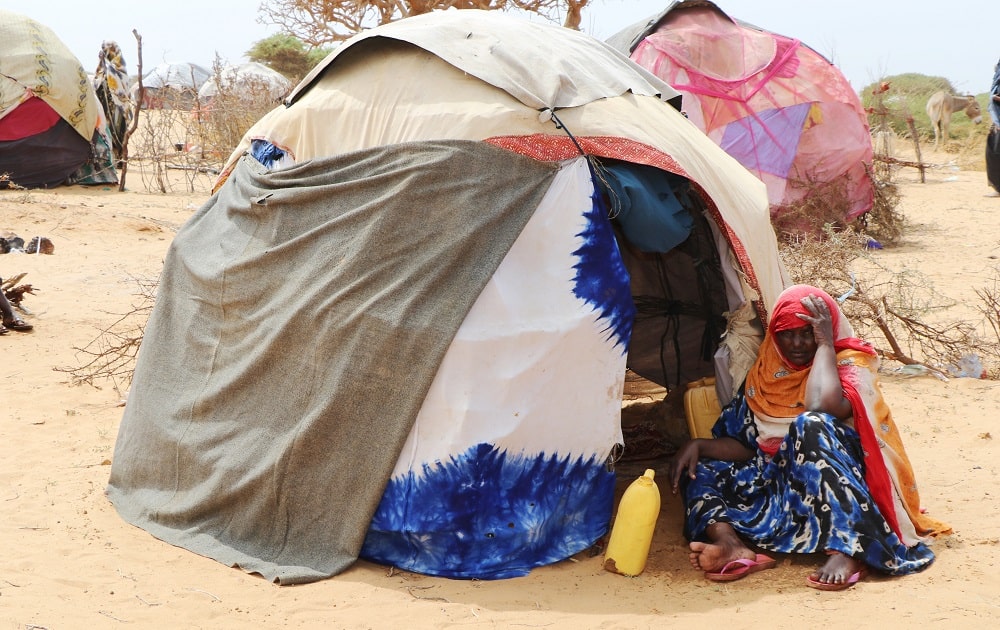Somalia drought: 1.4 million people may be forced from their homes, preventative action needed now
By Tim Skarstein
Norwegian Refugee Council
Photos By Adulkadir Mohamed
Somalia’s escalating drought is creating a massive displacement crisis. 245,000 people have already fled their homes, with numbers projected to reach up to 1.4 million as the drought worsens.
“Somalia’s drought is dangerously escalating following three failed rainy seasons and some of the lowest rainfall in 40 years,” said Mohamed Abdi, Country Director for the Norwegian Refugee Council (NRC) in Somalia. “Without urgent preventative action to alleviate the crisis, lives will be lost.”
A quarter of a million people have had no option but to leave their homes since the beginning of 2021, facing life-threatening water and food shortages. Humanitarian efforts are underway, but available resources are insufficient to meet increasing and urgent needs.

NRC’s humanitarian staff across the country are reporting increasing numbers of deceased livestock, malnourished children, drought-related deaths, and people searching for aid. Women, children and the elderly are hardest hit.
“I fled with my children and arrived here, we had no other option,” said Ebla Abdi, a mother of five who travelled 200 kilometres to a displacement camp in Kismayo, southern Somalia. “We had 30 cows, but many of them died because of the drought.”
“All my cattle succumbed to the drought. I lost 75 cows in a single night,” said Markaba Bulle, a 90-year-old grandmother displaced by drought, arriving to the same camp. “We walked for eight days to reach here.”
Preventative action, including supply of drinking water, food, basic income, and support for livelihoods, is crucial to avoid further displacement. Similar support, as well as shelter, is required for those already forced to leave their homes. NRC aims to provide this support to half a million of those hardest hit.
“To avert the humanitarian disaster unfolding before our eyes, we are asking donor countries to provide the funding necessary to ensure lifesaving assistance for the millions of people affected by one of the worst droughts in the last decade,” said Abdi.
According to data from the Protection and Monitoring Returns Network (PRMN), 147,000 people have been displaced due to drought in the previous three months alone.
At present, 3,200,000 people in Somalia – one-fifth of the population – are impacted by drought. Recent projections by IOM’s Displacement Tracking Matrix (DTM) estimate that up to 1,415,000 people may be displaced in the coming six months.

The drought is posing severe consequences for communities, including food and water insecurity, malnutrition, rising commodity prices, crop and livestock losses, and risks to safety, including gender-based violence and conflicts over natural resources.
Photos from an internally displaced persons camp in Kismayo, southern Somalia (filmed in late December, 2021) are available for free use and distribution here.
videos from an internally displaced persons camp in Kismayo, southern Somalia is available here.
The Protection and Return Monitoring Network is a UNHCR-led project implemented in partnership with NRC, which reports on displacement and protection risks. The latest data can be found here.
IOM’s Displacement Tracking Matrix (DTM) analysis projections estimate that, based on the current drought severity scenario, between 1,036,000 to 1,415,000 people may be displaced by drought in the coming 6 months. 1,036,000 based on resident populations, while 1,415,000 includes potential secondary displacement of current IDPs.
Since December 2021 the drought severity has worsened and as of January 2022, most parts of the country are experiencing severe drought, with Jubaland and central regions and adjacent areas already in extreme drought, according to a new report by FAO.









